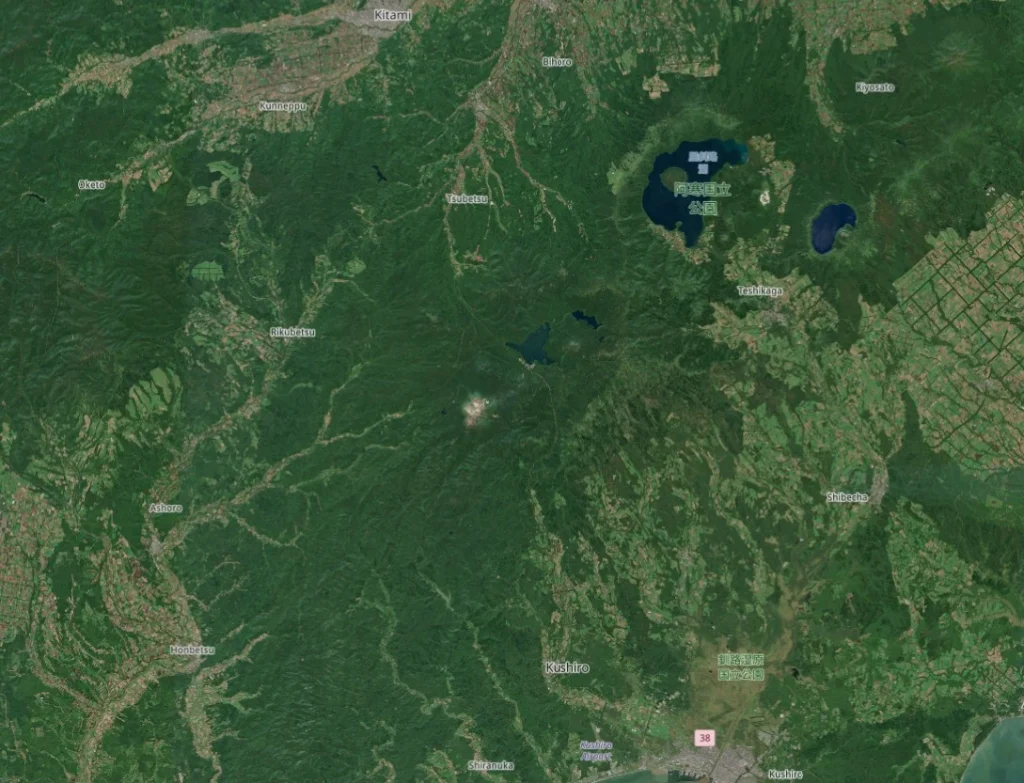The Japan Meteorological Agency (JMA) raised the Alert Level for Meakandake volcano in Hokkaido, Japan, from 1 to 2 at 06:20 UTC (15:20 JST) on September 15, 2025, after an increase in seismicity near Ponmachineshiri Crater. From September 16 to 23, eruptive activity continued with 27–50 daily volcanic earthquakes, minor ashfall, and white steam-and-gas plumes rising 200–800 m (656–2 625 feet) above the crater rim. Access within 500 m (1 640 feet) of the crater remains restricted, affecting parts of Kushiro City and Ashoro Town.
The Japan Meteorological Agency (JMA) raised the Alert Level for Meakandake (Me-Akan), part of the Akan volcanic complex in eastern Hokkaido, from 1 to 2 at 06:20 UTC (15:20 JST) on September 15, after elevated seismicity near Ponmachineshiri Crater.
The agency imposed a restriction on approaching within 500 m (1 640 feet) of the crater, covering parts of Kushiro City and Ashoro Town.
Seismicity, which began to increase on September 11, remained elevated with 27–50 daily volcanic earthquakes detected between September 16 and 23. Meanwhile, ground tilt continued to shift slowly toward Ponmachineshiri Crater. Minor ashfall occurred around the crater on September 16.
From September 17 to 23, persistent white steam-and-gas plumes were emitted from 96-1 Crater within Ponmachineshiri. The plumes rose 200–800 m (656–2 625 feet) above the crater rim and drifted east and southeast.
 Satellite image of Meakandake volcano, Japan on September 15, 2025. Credit: Copernicus EU/Sentinel-2, The Watchers
Satellite image of Meakandake volcano, Japan on September 15, 2025. Credit: Copernicus EU/Sentinel-2, The Watchers
Akan is a 13 x 24 km (8 x 15 miles) caldera located immediately southwest of Kussharo caldera. Its elongated, irregular rim reflects incremental formation during major explosive eruptions in the early to mid-Pleistocene. Growth of four post-caldera stratovolcanoes, three at the southwest end and one at the northeast side, limited the development of a caldera lake. Conical Oakan-dake was frequently active during the Holocene.
Within the caldera, the Meakandake group is the only historically active center. It consists of nine overlapping cones east of Lake Akan. The 1 km (0.62 miles) wide Nakamachineshiri Crater was created about 13 500 years ago in a major pumice-and-scoria eruption.
The main cone of Meakandake has a triple crater at its summit. Historical activity has been dominated by mild phreatic eruptions since the early 19th century, but at least four magmatic eruptions producing pyroclastic flows have occurred during the Holocene.
The most recent confirmed eruption at Meakandake took place between November 18 and 28, 2008. It was a small explosive and effusive event with a Volcanic Explosivity Index (VEI) of 1. Other eruptions of similar scale occurred in 2006, 1998, 1996, and 1988, as well as multiple events in the mid-20th century. Most of these eruptions were short-lived, low-intensity explosions.
There are at least 35 confirmed eruptions at Meakandake, including larger Holocene events. A VEI 3 eruption occurred around 3550 BCE ± 500 years, while major VEI 4 eruptions have been dated to about 7050 BCE and 50 BCE.
References:
1 Meakandake Volcanic Warning – JMA – September 15, 2025
2 Report on Akan (Japan) (Sennert, S, ed.) – GVP – Weekly Volcanic Activity Report: September 17-23, 2025


AloJapan.com